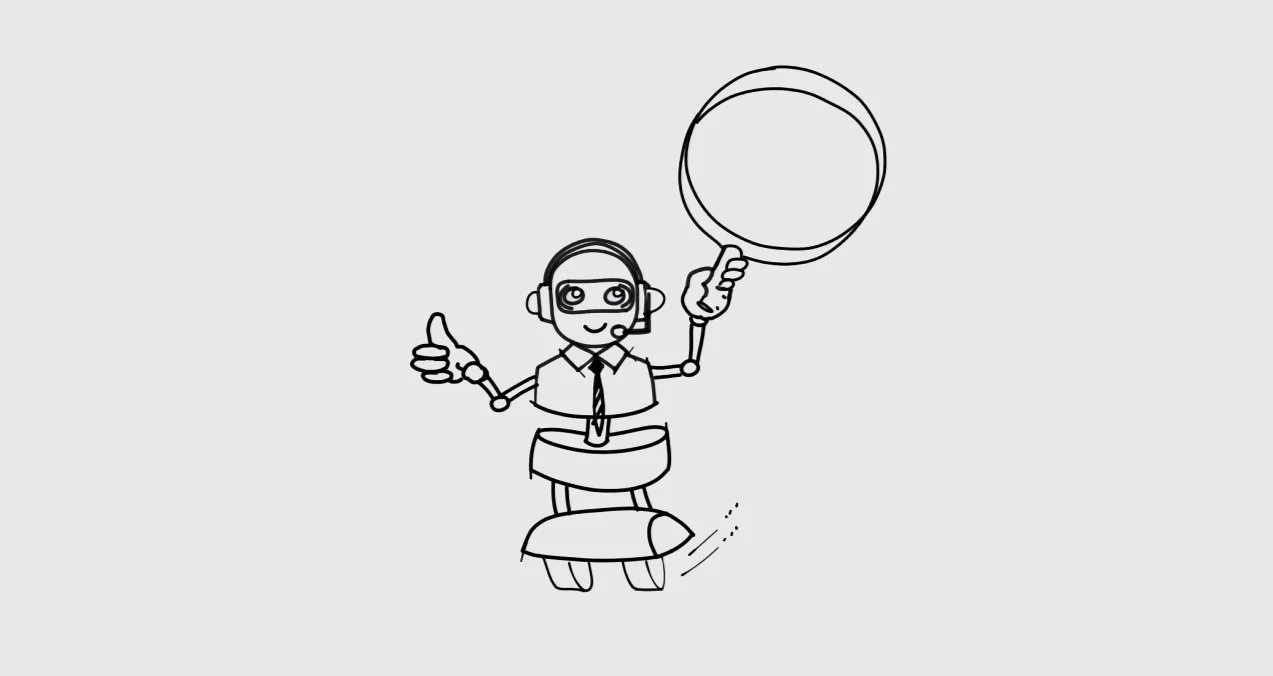Building A More Generative Culture by Leveraging The Era of AI
In Thriving in the Age of AI: The Generative Advantage, I argued that success in adopting AI and adapting existing business operating models will not be uniform, and that organizational culture is the distinguishing difference. Simply stated, in the face of transformative technologies, those with a generative culture, as defined by Ron Westrum, will thrive, while those organizations with bureaucratic and pathological cultures will struggle, resisting change and unable to quickly adopt AI and transform. But there is good news for organisations with bureaucratic cultures. This paper argues that Generative AI can itself help foster a Generative Culture. By adopting Generative AI, organizations can become less bureaucratic, helping them ‘shift right’ along Ron Westrum’s continuum of organizational cultures towards a more generative culture. The key is the power of Generative AI (Gen AI) to enhance information flow.
The visualization below shows the Westrum Continuum and how information flows in relation to error reporting and responses to anomalies.
Pathological cultures engage in suppression and encapsulation, bureaucratic cultures engage in public relations and make local fixes, while generative cultures seek global fixes and engage in inquiries. Historically it has been hard for large organizations to resist becoming bureaucratic. As organizations grow, they form silos, which enables specialization and focus but also creates perfect petri dishes for incubating more bureaucratic cultures. Organizations find making global fixes becomes harder and harder, and inquiries take significant effort.
Over time, many large enterprises have also created increasing piles of unstructured data inside these silos. People always knew this unstructured data contained potentially valuable knowledge, but because it was unstructured and stuck in silos, it almost always remained unknowable and untouchable to all but a few specialists. Sometimes some brave soul would try to tackle the almost impossible task and ‘clean the Augean data stables’ at the enterprise level. These efforts would almost always fail because the leaders of the silos were not bought in. Sometimes a silo leader would invest in technology and successfully solve a significant problem. But those initiatives didn't scale across the wider organization.
Gen AI now has the potential to help many organizations ‘shift right’ along the Westrum Continuum and tackle some of their bureaucratic cultural characteristics by increasing the level of information flow, enabling far more global fixes and much easier inquiries. In doing this, Gen AI should be seen as foundational scaffolding for increasing information flow and enabling new ‘bridging processes’ across departmental silos. Gen AI can enable people to re-invent how they work together. If organizations seize on this potential, then investments in Gen AI could be used for possibly the most valuable return on the investment, one that helps the organization create a more generative culture.
This is already starting to happen, thanks to practical, easy-to-set-up-and-use combinations of Gen AI and storage for unstructured data. Organizations adopting these new storage solutions can almost immediately start using semantic search (which is far superior to keyword-based search) to find documents that are conceptually similar, using simple queries that work even if the exact words aren't present. This works by using Large Language Models (LLMs) to help them find relevant information in their organization's documents making the search intuitive, effective, and easy. Once established, Gen AI-enabled storage systems will automatically index unstructured data in vector databases at the point of storage. Once the initial indexing of documents into vectors is done, LLMs can retrieve relevant chunks incredibly quickly, often in milliseconds. This near-real-time retrieval is what makes Gen AI-powered storage turn unstructured data into a Q&A capability that people can use to find specific information across large document sets. Vector databases are designed to handle massive amounts of data, making them suitable for even the largest corporate knowledge bases.
These relatively simple solutions can be implemented silo-by-silo and, if an enterprise works to deliberately change its culture, then it becomes a question of who gets access rights to ‘chat to the data.’ Because the LLM is easily able to ‘grab the right data,’ people with access rights are suddenly empowered to find what they need to know when they need to know it. They can respond to queries much more easily and accurately. They can explore context and history, and they can find patterns to problems and work to prevent them from recurring with global fixes. They can engage in inquiries ‘across silos.’
Having started to improve information flow, the organization can build on this foundation by deploying a growing number of AI agents. One simple example is the organization who decided to look at all their customer tickets, after action review documents, and root cause analysis documents. They enabled a cross functional group of people to chat with these documents using semantic search and they are using retrieval-augmented generation (RAG) to make inquiries easier and understand what has been going wrong and how to make global fixes. Because they can now easily find and rapidly retrieve what they might already have known but could not find as an organization, they can start to speed up exploration and significantly increase the speed of quality enhancements and error elimination. Across silos. Breaking down bureaucratic barriers. Empowering people.Whenthey created the cross-functional team they included in the goals not simply improving quality, but also enhancing their generative culture. They plan to measure collaboration, their ability to implement general fixes, and their ability to engage in inquiries and resolve future problems with speed and elegance.
Interestingly, the actions being taken by this organization highlights one of the common wrongly held myths about organizational culture: that it is very slow and very hard to change culture. Ron Westrum’s work shows that cultures can change very quickly and that leaders and leadership behaviors have far more influence on these changes than some leaders may be happy to admit. Gen AI solutions are incredible tools for those leaders who want to work on actively shaping their culture, and leaders seeking to leverage these tools should focus on information flow as the key lever, and view shifting right to a generative culture as a goal.
Some people still don't get this. If you hear people saying that the problem with Gen AI is that we have lots of data dung and it is a case of ‘Garbage In, Garbage Out,’ then they haven't understood the potential that now exists for sorting through the data dung by making what was inaccessible accessible, and understanding the quality using semantic search. Data problems will still exist and will emerge, and people need to see how understanding these problems is a positive first step. If people push back on the value of this, try re-framing it as building real-time "heat maps" of data quality deficiencies based on actual user interactions. As people seeking answers quickly discover the boundaries of their documented knowledge, they can send signals back on what is poorly documented or not documented at all. Data improvements can follow, provided the organization sees this as part of an important program of culture change.
If you hear other people say “it is very complex to implement,” then they are either not up to speed with the latest solutions (where the storage solution automatically builds the vector database and becomes the data pipeline), or more likely they are reflecting the existing pathological or bureaucratic culture and are afraid of starting the journey. Push back. It is neither too hard nor too expensive.
If you hear things like ‘these LLMs are always hallucinating’ or ‘they are just stochastic parrots’, then it is a signal that people have not understood what the potential value is from semantic search, RAG and gaining a better understanding of unstructured data. This exploratory work is best placed into the hands of those who know their domain. These are the people least likely to create ambiguous queries or engage in over complicated reasoning. Empower these local experts and keep the consultants at arms length. Start with the simple stuff. Today most people simply don't know what they don't know and what they do know. The first phase in ‘cleaning the stables’ is understanding what is hidden in the dung, and what is not. That means giving domain experts the tools and empowering them to surface the problems and patterns.
The next phase involves improving documentation practices, identifying knowledge gaps, and ensuring the accuracy and currency of internal information. This "meta-learning" is valuable and, longer term, its value may exceed the immediate benefits of just ‘finding things’. The organization will be better placed to reduce risks, speed up handoffs, and enable more and more self-service that works, without gatekeepers. Gen AI Agents can handle simple small activities. Families of agents can tackle larger tasks, and gather and process information faster and faster, creating better information flow. Focusing on access rights to information and on decision making helps identify areas to redefine information flow for decisions. Looking at this through a cultural lens, Gen AI can help organizations enhance their information flow, and in doing so, enable a shift to a more generative culture.
Those organizations with generative cultures who are embracing Gen AI are finding it is a powerful lever for enhancing their culture, strengthening their practices on the right hand side of the Westrum Continuum, driving innovation, efficiency, and growth. For bureaucracies, Gen AI is a win-win opportunity. They can use Gen AI to help change their culture, and because of that, get faster and better at gaining additional value from Gen AI. Those organizations with pathological cultures are unlikely to follow, and may stay trapped in silos, likely to fall even further behind, increasing their risk of becoming obsolete. Once again, the choice is clear: embrace the generative culture advantage and Gen AI, or risk quickly falling further behind.








